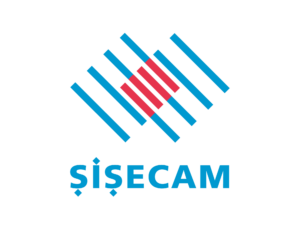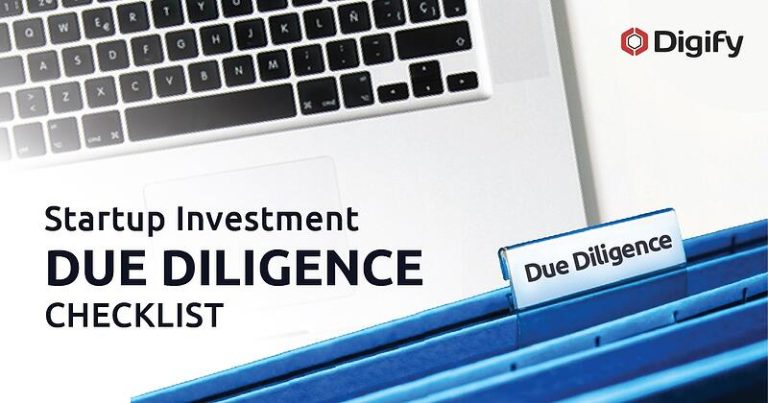Der Markt für Startup-Investitionen ist so stark wie seit Jahren nicht mehr. Doch wie Sie vielleicht bereits auf schmerzhafte Weise erfahren mussten, ist die Startup-Finanzierung in jedem Markt eine unerbittliche Herausforderung. Dennoch gibt es bewährte Methoden, um sich darauf vorzubereiten.
Einer der besten ersten Schritte ist es, so viel wie möglich über den Finanzierungsprozess selbst zu lernen. Um Ihnen dabei zu helfen, stellen wir Ihnen im Folgenden einige überraschende Statistiken zur Startup-Finanzierung vor. Anschließend gehen wir näher auf die Unterschiede zwischen den verschiedenen Phasen der Startup-Finanzierung ein. Wir beginnen mit der entscheidenden Unterscheidung zwischen der Angel-/Seed-Runde und der Serie-A-Runde. Anschließend untersuchen wir, was nach der Serie A kommt und wie viele Finanzierungsrunden Ihr Start-up anstreben kann oder sollte.
Abschließend helfen wir Ihnen dabei, Ihre Nische, Ihren Standort, Ihre Investitionsphase, Ihr professionelles Netzwerk und Ihren Mentoring-Bedarf zu berücksichtigen, während Sie Ihre Liste der idealen Investoren eingrenzen, die Sie heute ansprechen sollten.
Überleben von Start-ups: Wie stehen die Chancen?
Nachdem CB Insights fast ein Jahrzehnt lang mehr als tausend US-Startups von der ersten Startfinanzierung an begleitet hat, liefert uns das Unternehmen einige ernüchternde, aber auch vielversprechende Statistiken zur Startup-Finanzierung:
- Die durchschnittliche Seed-Finanzierung belief sich auf 700.000 US-Dollar.
- Weniger als die Hälfte der Startups mit Seed-Finanzierung schaffte es in die zweite Runde (d. h. Serie A).
- Weit über die Hälfte (61 %) der Unternehmen, die eine Serie-A-Finanzierung erhielten, schafften es in die Serie B.
- 28 % der Startups mit Seed-Finanzierung schieden schließlich innerhalb der ersten sechs Finanzierungsrunden durch Fusion, Übernahme oder Börsengang aus.
- 70 % scheiterten schließlich oder stellten während dieser Zeit die Suche nach (und möglicherweise auch den Bedarf an) Finanzmitteln ein.
- Weniger als 1 % wurden zu Einhörnern (d. h. wurden schließlich mit 1 Milliarde Dollar oder mehr bewertet, darunter Slack, AirBnB und Uber).

Was ist der Unterschied zwischen Angel-, Seed- und Series-A-Finanzierung?
Obwohl Unternehmer und die Investment-Community weiterhin über die feinen Unterschiede zwischen Angel-Finanzierung und Seed-Finanzierung diskutieren werden, sind sie aus der Vogelperspektive betrachtet praktisch identisch. Weitaus wesentlichere Unterschiede zeigen sich beim Vergleich und der Gegenüberstellung von Angel-/Seed-Finanzierung einerseits und Serie-A-Finanzierung andererseits. Sehen wir uns diese einmal genauer an:
Dollarbeträge
Es gibt keinen festen Dollarbetrag, der eine Seed- oder Angel-Finanzierungsrunde definiert. In der Regel handelt es sich jedoch um Beträge in Höhe von Zehn- bis Hunderttausenden Dollar und nicht um Millionen (zumindest nicht um viele Millionen). Wenn Sie nach konkreteren Zahlen suchen, gibt RocketSpace den Bereich für Seed-Finanzierungen mit 50.000 bis 2 Millionen Dollar an. Im Gegensatz dazu gibt Rocketspace den Bereich für Serie-A-Finanzierungen mit 2 bis 10 Millionen Dollar an. Natürlich schwanken die Serie-A-Finanzierungsrunden in der Realität stark. Aber sie sind in der Regel um ein Vielfaches höher als das, was Sie von einer Seed-Finanzierungsrunde erwarten können.
Schwierigkeitsgrade
Im Allgemeinen ist die erste Runde die schwierigste. Das sollte keine Überraschung sein. Trotz der geringeren Dollarbeträge stellen Seed- und Angel-Finanzierungsrunden das größte Risiko für den Investor dar. Daher sind Sie mit der größten Knappheit an Finanzmitteln und dem härtesten Wettbewerb um diese konfrontiert.
Wenn Sie also erfolgreich eine Seed- oder Angel-Finanzierung sichern können, haben Sie bereits die höchste Eintrittsbarriere überwunden. In der Serie A stehen Sie jedoch vor neuen Herausforderungen, wie beispielsweise einem gründlichen Due-Diligence-Prozess.
Runway
Eine Angel-/Seed-Runde kann relativ schnell, wenn nicht sogar über Nacht, stattfinden. Das liegt vor allem daran, dass Sie nur wenige Hürden nehmen müssen, zumindest im Vergleich zu späteren institutionellen Finanzierungsrunden. Wenn Sie jedoch von einer Seed- oder Angel-Finanzierung zur Serie-A-Finanzierung übergehen, ist es an der Zeit, Geduld zu entwickeln. Aller Wahrscheinlichkeit nach benötigen Sie einen viel längeren Vorlauf, um die Serie A zu erreichen. Beginnen Sie daher mit dem Fundraising-Prozess so früh wie möglich vor Ihrer geplanten finanziellen Deadline.
In einigen Fällen können VCs jahrelang abwarten, während Sie andere Wege suchen, um im Spiel zu bleiben. Daher ist es wichtig, dass Sie beim Einstieg in die Welt der VCs eher in langfristigen Beziehungen denken als in schnellen Deals.
Formalitäten
Die Best Practices für die Kapitalbeschaffung ändern sich auch dramatisch, wenn Sie von der Seed-/Angel-Finanzierung zur Serie A übergehen.
Seed- und Angel-Runden sind in der Regel relativ informell und bestehen oft aus einer Reihe von lockeren Gesprächen in Cafés oder anderen öffentlichen Orten. Die Serie A ist eine ganz andere Geschichte. Benannt nach den Serie-A-Vorzugsaktien, ist die Serie A die erste wirklich formelle Finanzierungsrunde. Dies wird im Laufe des institutionellen Fundraising-Prozesses immer deutlicher werden.
Um sich auf die Serie A vorzubereiten, sollten Sie auf jeden Fall mit Ihrer Due Diligence-Checkliste beginnen, die sich von diesem Zeitpunkt an als wesentlicher Schritt in jeder Finanzierungsrunde erweisen wird. In den meisten Fällen müssen Sie auch in Ihrem Organigramm Platz für einen Verwaltungsrat und Berater schaffen.
Sicherheit von Dokumenten
Während einer Seed-Runde nutzen Sie häufig informelle Plattformen, um Dokumente mit potenziellen Investoren zu teilen. Wenn jedoch alle Parteien übereinstimmen, dass die Sicherheit von Dokumenten von größter Bedeutung ist, lohnt es sich, einen virtuellen Datenraum (VDR) in Betracht zu ziehen. Dennoch wird ein VDR in der Regel als bloßes „Nice-to-have“ für Seed- und Angel-Runden angesehen.
Sobald Sie jedoch die Serie A erreichen, ist ein VDR ein unverzichtbares Muss. Institutionelle Investoren erwarten immer Zugriff auf einen VDR der Enterprise-Klasse, um Ihre Unterlagen in einem sicheren Bereich einsehen zu können.
Wie verändert sich die Finanzierung mit Serie B, C und darüber hinaus?
Einige Investoren charakterisieren Unternehmen, die Serie B erreicht haben, als Unternehmen, die die Entwicklungsphase verlassen haben und in die Expansionsphase eingetreten sind. Wenn Sie noch weiter in Serie C voranschreiten, kann die schnelle Expansion in eine reife Skalierung übergehen. In diesen späteren Runden können auch Fusionen und Übernahmen eine Rolle spielen.
Viele erfolgreiche Unternehmen beginnen sogar, einen Börsengang in Betracht zu ziehen, um weitere Mittel zu beschaffen. Für diejenigen, die lieber ein privates Unternehmen bleiben möchten, aber dennoch Finanzmittel benötigen, werden die Serie C und darüber hinaus wahrscheinlich immer größere Finanzspritzen in Höhe von oft mehreren zehn Millionen Dollar erfordern. Mit den weitaus höheren Geldbeträgen gehen jedoch auch weitaus höhere Erwartungen an die Marktführerschaft und ein konstantes Umsatzwachstum einher.
Wie viele Finanzierungsrunden gibt es?
Im Allgemeinen nur sehr wenige. Die harte Wahrheit ist, dass die überwiegende Mehrheit der Startups scheitert, bevor sie die dritte oder vierte Runde erreichen. Obwohl es klug ist, langfristig zu denken, ist es im Allgemeinen nicht notwendig, mehr als ein oder zwei Runden im Voraus zu planen. Natürlich gibt es immer Ausnahmen.
Wenn Sie beispielsweise an einem mehrjährigen, produktionsabhängigen Projekt beteiligt sind, wie der Entwicklung einer besseren Grafikkarte, ist es wahrscheinlich am besten, sich im Voraus mit einem einzigen institutionellen Investor mit einem mehrstufigen Investitionsplan in Verbindung zu setzen. Auf diese Weise können Sie Ihr langfristiges Projekt bis zum Ende verfolgen, ohne dass Ihnen unterwegs der Boden unter den Füßen weggezogen wird.
Wer sind die besten Investoren, an die man sich wenden kann?
Zu wissen, an wen man sich wenden sollte und wen man meiden sollte, ist eine der wichtigsten Fähigkeiten, die man sich aneignen kann, wenn man sich in das Labyrinth der Startup-Finanzierung begibt.
Es gibt mindestens fünf Faktoren, die Sie berücksichtigen sollten, wenn Sie Ihre Liste der Investoren eingrenzen: Ihre Nische, Ihre Wachstumsphase, Ihr Standort, Ihr berufliches Netzwerk und Ihr Bedarf an Mentoring. Schauen wir uns jeden dieser Faktoren genauer an:
Ihre Nische
Es ist kein Geheimnis, dass Sie sich bei der Suche nach Startup-Investoren in Ihrer Branche bewegen sollten. Es ist jedoch wichtig, Ihre Fundraising-Strategie noch genauer abzustimmen. Sie müssen Investoren finden, die nicht nur an Ihrer Branche, sondern auch an Ihrer Nische interessiert sind. Um den Sweet Spot zu finden, suchen Sie nach Angel-Investoren, VCs und Firmen, die konsequent und erfolgreich in Unternehmen investiert haben, die in genau Ihrem Markt tätig sind, aber nicht Ihre Konkurrenten sind.
Ihre Phase
Ihre Liste potenzieller Investoren muss zu Ihrer Investitionsphase passen. Es macht beispielsweise keinen Sinn, einen Angel-Investor anzusprechen, wenn Sie eine Serie-A-Finanzierung suchen. Schließlich ist der Betrag, den Sie benötigen, wahrscheinlich um ein Vielfaches höher als das, was ein Angel-Investor bereitstellen kann.
Wenn Sie hingegen nur hunderttausend Dollar an Angel-Finanzierung benötigen, ist es ebenso unklug, eine institutionelle Investmentfirma wie Kleiner Perkins anzusprechen, die sich auf spätere Finanzierungsrunden spezialisiert hat.
Ihr Standort
Im Allgemeinen leben Investoren gerne in der Nähe ihrer Investitionen. Unter Berücksichtigung dieses Grundsatzes sollten Sie sich zunächst an die Investorengemeinschaft in Ihrer nächstgelegenen Metropolregion wenden. Und trotz aller gegenteiligen Behauptungen muss dies nicht unbedingt Silicon Valley sein. Zwar gibt es in Silicon Valley pro Kopf mehr Investoren als vielleicht irgendwo sonst auf der Welt, aber es gibt auch viel mehr Unternehmer, die um ihre Aufmerksamkeit buhlen.
Außerdem ist die Bay Area ein extrem teurer Ort zum Leben und zum Gründen eines Start-ups. Sie können Ihr Investitionsbudget sicherlich besser nutzen, wenn Sie vor Ort Kapital beschaffen und gleichzeitig die lokale Start-up-Szene fördern.
Ihr berufliches Netzwerk
Wenn Sie bereits über ein solides berufliches Netzwerk auf LinkedIn oder anderswo verfügen, sollten Sie es jetzt nutzen. Arbeiten Sie unermüdlich daran, alle direkten und indirekten Verbindungen zu geeigneten Investoren aufzudecken.
Wenn Sie noch kein großes berufliches Netzwerk haben, ist es an der Zeit, eines aufzubauen. Beginnen Sie damit, an führenden Branchen- und Nischenkonferenzen teilzunehmen, auf denen Investoren häufig nach potenziellen Kandidaten suchen.
Ihr Bedarf an Mentoring
Investoren sind alles andere als passive Geldautomaten. Sie möchten oft in alle wichtigen Entscheidungen, die Sie mit ihrem Geld treffen, einbezogen werden. Suchen Sie sich also einen Investor, dem Sie vertrauen, der Sie regelmäßig begleitet und mit dem Sie gut auskommen.
Idealerweise sollte der Angel-Investor oder VC genug über Ihr Unternehmen und Ihren Markt wissen, um eine vertrauenswürdige Ressource zu sein und nicht als überheblicher Nörgler zu wirken. Sehen Sie es einmal so: Wenn Sie in Ihrem Investor einen vertrauenswürdigen Mentor finden, haben Sie im Grunde genommen einen neuen, erfahrenen Führungskräfte gewonnen, der Ihr Unternehmen so sehr schätzt, dass er für eine Beteiligung arbeiten möchte.
Denken Sie daran, dass Sie, sobald Sie alle oben genannten Punkte berücksichtigt und Ihre Liste der Investoren eingegrenzt haben, diese auch noch ansprechen müssen. Da Sie mit Hunderten von anderen um jede Sekunde ihrer Aufmerksamkeit konkurrieren, wird dies harte Arbeit sein, und Sie müssen sich auf einen langen Weg einstellen. Wie Bill Radar, CEO eines Start-ups, betont, sind in der Regel „Hunderte von Vorstellungsgesprächen, Anrufen, Pitches und Meetings notwendig, um die richtigen Investoren zu finden“.
Startup-Finanzierung im Jahr 2022
Trotz des stärksten Startup-Investmentmarktes seit Jahren bleibt die Startup-Finanzierung auch im Jahr 2022 eine anhaltende Herausforderung. Wir haben versucht, Ihnen dabei zu helfen, diese Herausforderung zu meistern, indem wir wichtige Fragen behandelt haben, die den Kern des Venture-Capital-Finanzierungsprozesses ausmachen.
Zunächst haben wir uns die Rohdaten angesehen, die ein breites Spektrum an Bedenken hinsichtlich der Beschaffung von Risikokapital von der Gründung bis zum Exit widerspiegeln. Als Nächstes haben wir die tiefgreifenden Unterschiede zwischen Angel-/Seed-Runden und Series-A-Runden untersucht, darunter Dollarbeträge, Schwierigkeitsgrade, Runways, Formalitäten und Praktiken zur Sicherheit von Dokumenten. Anschließend haben wir untersucht, was nach der Series A kommt und wie viele Finanzierungsrunden Ihr Unternehmen möglicherweise anstreben sollte.
Schließlich haben wir Ihnen gezeigt, wie Sie Ihre Nische, Ihren Standort, Ihre Investitionsphase, Ihr professionelles Netzwerk und Ihren Mentoring-Bedarf berücksichtigen können, um die Liste der idealen Investoren einzugrenzen, an die Sie sich wenden sollten. Wenn Sie all diese Tipps beherzigen und in die Praxis umsetzen, sollten Sie gut gerüstet sein, um die aufregende Phase der Kapitalbeschaffung für Ihr Start-up im Jahr 2022 zu meistern.












